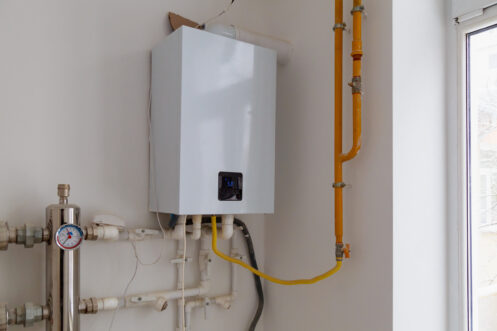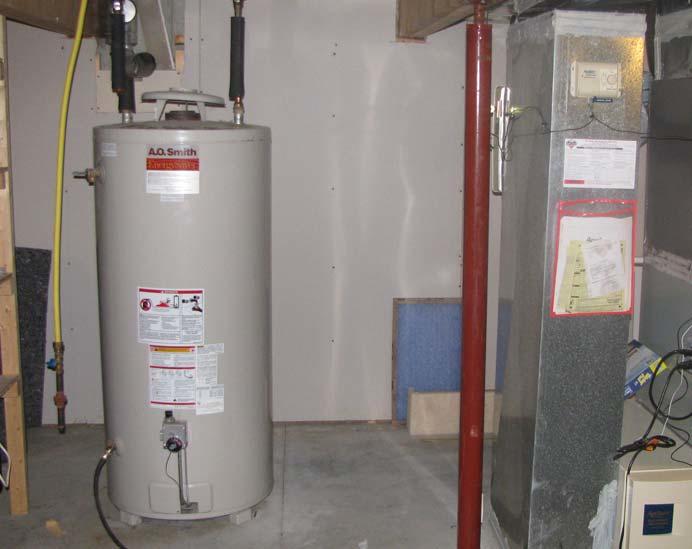Expert Tips on Maintaining Your Home's Hot Water System
Expert Tips on Maintaining Your Home's Hot Water System
Blog Article
Any individual has their own individual perception involving Water Heater Maintenance Tips You Can't Afford to Forget.

Warm water is crucial for daily convenience, whether it's for a refreshing shower or washing dishes. To guarantee your warm water system runs effectively and lasts longer, routine upkeep is crucial. This short article provides functional ideas and insights on how to preserve your home's warm water system to avoid interruptions and costly repairs.
Introduction
Keeping your home's hot water system may appear overwhelming, but with a few simple actions, you can ensure it operates smoothly for years ahead. This guide covers every little thing from understanding your hot water system to DIY maintenance pointers and recognizing when to call in specialist assistance.
Significance of Maintaining Your Warm Water System
Normal upkeep not only prolongs the life-span of your warm water system but additionally ensures it operates successfully. Disregarding upkeep can cause reduced effectiveness, greater energy costs, and also early failure of the system.
Signs Your Warm Water System Requirements Upkeep
Knowing when your hot water system requires attention can avoid significant concerns. Watch out for indications such as inconsistent water temperature, strange noises from the heating unit, or corroded water.
Understanding Your Warm Water System
Prior to diving right into maintenance tasks, it's handy to comprehend the standard components of your warm water system. Typically, this consists of the water heater itself, pipelines, anode rods, and temperature level controls.
Regular Monthly Upkeep Tasks
Normal monthly checks can help capture minor issues prior to they intensify.
Flushing the Water Heater
Flushing your water heater gets rid of sediment accumulation, boosting effectiveness and extending its life.
Monitoring and Changing Anode Rods
Anode poles avoid rust inside the container. Inspecting and changing them when broken is vital.
Inspecting and Adjusting Temperature Level Settings
Changing the temperature level setups guarantees optimum performance and safety and security.
DIY Tips for Maintenance
You can execute a number of upkeep tasks on your own to maintain your hot water system in top problem.
Looking for Leakages
Regularly examine pipelines and links for leaks, as these can result in water damage and higher bills.
Checking Stress Alleviation Valves
Checking the stress relief valve guarantees it functions properly and prevents extreme pressure accumulation.
Insulating Pipes
Shielding warm water pipelines lowers warm loss and can conserve power.
When to Call a Specialist
While DIY upkeep is advantageous, some problems require professional know-how.
Complicated Concerns Needing Professional Help
Instances consist of major leaks, electric problems, or if your hot water heater is continually underperforming.
Regular Specialist Maintenance Conveniences
Expert maintenance can include detailed examinations, tune-ups, and guaranteeing compliance with safety and security criteria.
Verdict
Normal maintenance of your home's hot water system is essential for effectiveness, longevity, and expense savings. By following these pointers and understanding when to seek professional help, you can make certain a trusted supply of hot water without unexpected interruptions.
How to Maintain an Instant Hot Water Heater
Before tinkering with your hot water heater, make sure that it’s not powered on. You also have to turn off the main circuit breaker and shut off the main gas line to prevent accidents. Also turn off the water valves connected to your unit to prevent water from flowing into and out of the appliance. 2. When you’re done, you have to detach the purge valves’ caps. These look like the letter “T†and are situated on either side of the water valves. Doing so will release any pressure that has accumulated inside the valves while at the same time avoid hot water from shooting out and burning your skin. 3. When the purge valves’ caps are removed, you have to connect your hosing lines to the valves. Your unit should have come with three hoses but if it didn’t, you can purchase these things from any hardware or home repair shops. You can also get them from retail stores that sell water heating systems. Read the user’s manual and follow it to complete this task properly. When the hosing lines are connected, open the purge port’s valves. 4. You should never use harsh chemical cleaners or solutions when cleaning your unit. Make use of white vinegar instead. It should be undiluted and you’ll probably use about 2 gallons. 5. Now flush your water heater. This task should probably take about 40 minutes. We can’t give you specific directions for this because the procedure is carried out depending on the type, model and brand of your heater. With that being said, refer to the user’s manual. 6. When you’re done draining the unit, you have to turn off the purge port valves again. Remove the hosing lines that you earlier installed on each of the water valves. Put the valve caps (purge port) back in their respective places and be very careful so as not to damage the rubber discs that are found inside these caps. 7. Now that everything’s back in place, check your user’s manual again to find out how to reactivate your water heating system. 8. Once it is working, turn one of your hot water faucets on just to let air pass through the heater’s water supply pipes. Leave the tap on until water flows smoothly out of it. https://www.orrplumbing.com/blog/2014/september/how-to-maintain-an-instant-hot-water-heater/

As an enthusiastic person who reads about How to Maintain a Hot Water Heater in a Few Simple Steps, I figured sharing that piece of content was essential. Are you aware of anybody else who is inquisitive about Tips on Maintaining a Water Heater? Feel free to share it. I appreciate reading our article about Water Heater Maintenance Tips You Can't Afford to Forget.
Request A Quote Report this page